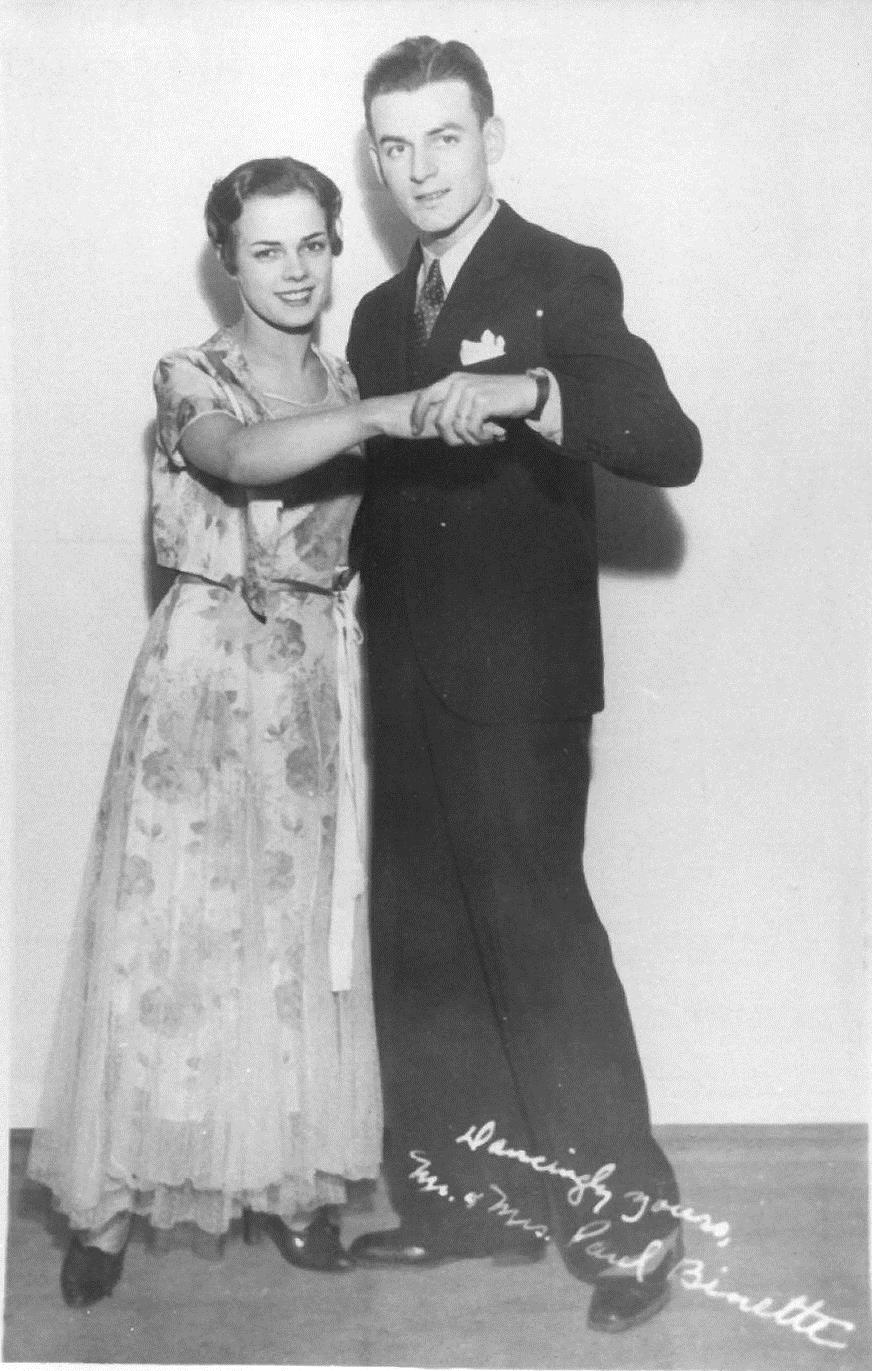
I couldn’t believe what I was seeing this morning – glassy-eyed people on the brink of exhaustion, clinging desperately to one another, stumbling all over the place, trying to hang on for a just a few more days.
Those folks just back to work after summer vacation?
Nah. They were dancers.
See, I was looking through a scrapbook from the old dance marathons they used to hold at the Bedford Grove, although, come to think of it, the dancers did look a lot like vacationers struggling to get back into their work routines.
You do remember dance marathons, don’t you? Yowsah, yowsah, yowsah! All you had to do was dance for, say, three or four months without stopping, and you could win a large cash prize.
How large?
How’s six hundred bucks sound?
That’s what they were offering when the Bedford Grove – technically, it was known as the Bedford Zoo Ballroom back then – hosted an event that The (Manchester) Leader called ”the first local manifestation of the inexplicable phenomenon of modern civilization known as the marathon dance contest.”

It was Jan. 25, 1933. Thirty-eight couples and three solo contestants were on hand for this ”strange drama,” something that had become a nationwide fad during the Great Depression.
There was nothing depressing, however, about the prospects for an attractive young couple from Manchester. Although the field had been filled with a number of imports from Worcester, it was clear that local newlyweds Paul and Irene (Lambert) Binette were to become the crowd favorites.
”Jobs were scarce then, so when my brother saw about the contest in the paper, he told my folks he and Irene were going to enter,” the late Frank Binette once told me. ”He figured they had a chance to make some money, and at least they’d get to eat seven times a day.’’
A six-piece jazz orchestra provided the tunes at the outset, after which the dancers settled into an odd routine. The rules allowed each couple 15 minutes per hour to rest and attend to… ahem, personal needs. Still, that meant the dancers would be on their feet for 45 minutes an hour, 24 hours per day.
To keep the action going, only a quarter of the dancers could be off the floor at any one time, and, to break the monotony for spectators – paying spectators, mind you – the dancing was frequently interrupted for ”floor shows.”
Regardless of their exhaustion, some of the contestants would sing, others would do impersonations and still others – clearly, gluttons for punishment – would dance. Their reward? Fans would toss money their way, money that one disgruntled contestant referred to as ”monkey change.”
Not Paul and Irene.
”They’d sing Dancing with Tears in My Eyes,” – seems an appropriate number – ”and the crowd would go wild,” Frank Binette said. ”It wasn’t just money either. People started bringing them gifts and as the contest went on, stores offered them things like luggage and furniture.”
Of course, the out-of-towners groused about favoritism toward the locals, but then again, they groused about everything. Some of the girls complained that their beds were just cots ”and hard as the dickens,” while another young man took exception to the food.
”It was terrible,” said Red Cheney, a dancer from Somerville, Mass., who dropped out of the event. ”They chased a chicken through the Merrimack River and called it chicken soup.”
The contest director, J.M. Lecuyer, issued a ”blanket denial.” I assume that was a reference to the bedding, but he also defended the chow.
”The dancers might even put on five to 20 pounds apiece,” Lecuyer said, while assuring authorities that such dancing had ”no ill effects” on participants. Apparently, a dancer named Bebe Hebert didn’t get the word. After a few weeks in the event, she was ”gravely ill,” in the words of The Leader. When she was admitted to the county hospital, her condition included partial blindness and paralysis in one leg. Even with those ailments, she was a better partner than the ones they assigned to those solo contestants.
”They made them dance with broomsticks,” Frank laughed. ”If a guy dropped out, they’d pair one of the ‘solos’ with a single woman, but if they didn’t have a partner, they had to dance with a broom.”
At least the floor was clean.
Spiritually speaking, so were the dancers. Since blue laws banned dancing on Sundays, organizers made sure the contestants went to church, which became a promotional spectacle in itself.
”They’d close up the ballroom and walk the dancers down to Sacred Heart Church on Main Street,” Frank said. ”The priest at Sacred Heart was happy as hell. He’d have people filling the pews and standing on the sidewalks just to see the marathon dancers.
”It got to the point where the priest at St. Jean’s said anyone from his parish who went to Mass at Sacred Heart would be dealt with severely,” Frank added. ”Hey, he was losing money every Sunday.”
If you think it’s tough to stay awake during a windy Sunday sermon, can you imagine how tough it was to sleep standing up? Fortunately, Paul and Irene learned the secret.
”You just had to have your partner lead you around while you were sleeping,” Frank recalled. ”Irene didn’t weigh a hundred pounds, so when she slept, she was like a bag of beans in Paul’s arms. But when he slept, he bent over like he had a disease. She’d just walk him around for two or three hours. She was tiny, but the human body is quite a machine.”
Sound like a grind? It was, and ”the grind” is how they eliminated stubborn contestants. When two weeks passed without the field being thinned, organizers stepped up the pace until somebody packed it in.
The Binettes never did. By May 6, after 101 days of dancing – that’s 2,431 hours! – they were declared the New England Marathon Dance Champions.
[Video from Bedford’s BCTV featuring Richard Duckoff 1 hour 20 minutes]
As fate would have it, a month after their win, a spoilsport state senator from Manchester named Aime Martel crafted a bill that prevented ”any female or minor from competing in such contests for more than eight hours in any one day.”
And just what does that mean?
It means no one ever matched the Binettes’ achievement. As a result, even though Paul passed away in 1976 and Irene left us in 1992, they still maintain a heavenly reign as Manchester’s king and queen of dance.
Oh, and if you think I’m exaggerating the phenomenon of the dance marathon, check out the Oscar-winning performance by Gig Young as the demented dance master in the classic 1969 film, They Shoot Horses, Don’t They?

John Clayton is Executive Director of the Manchester Historic Association. You can reach him with your historical (or existential) questions at jclayton@manchesterhistoric.org.
 You’re one click away! Sign up for our free eNewsletter and never miss another thing
You’re one click away! Sign up for our free eNewsletter and never miss another thing







